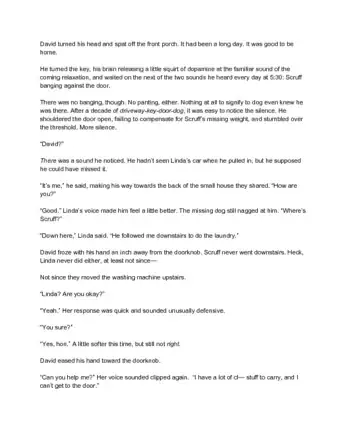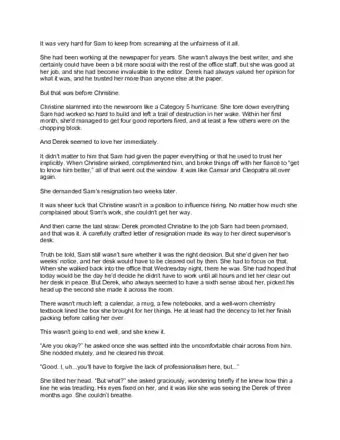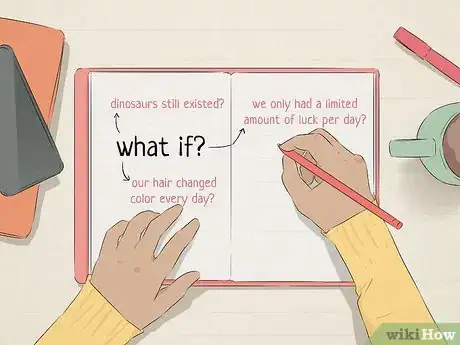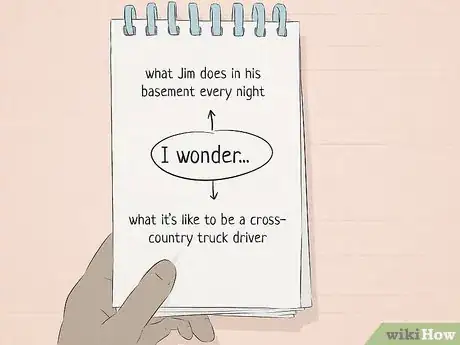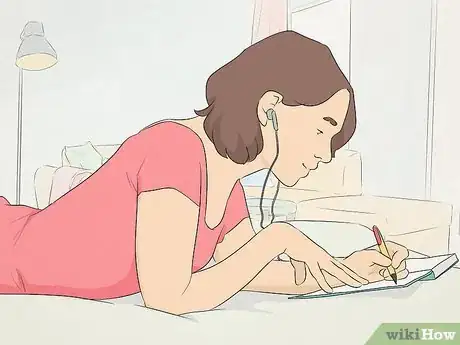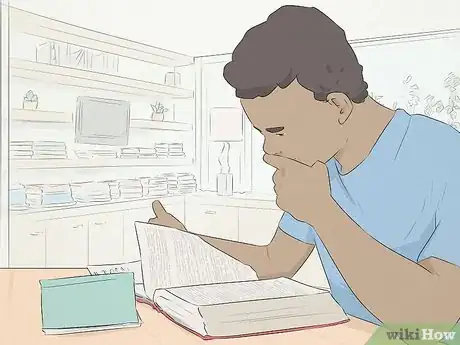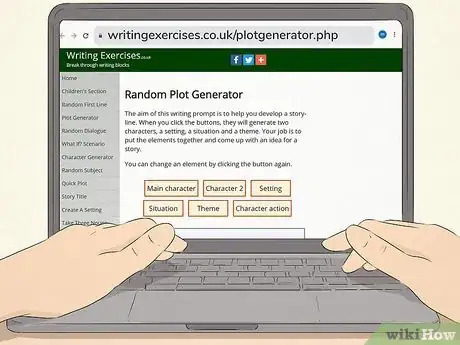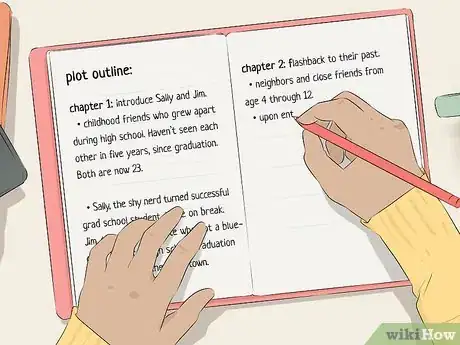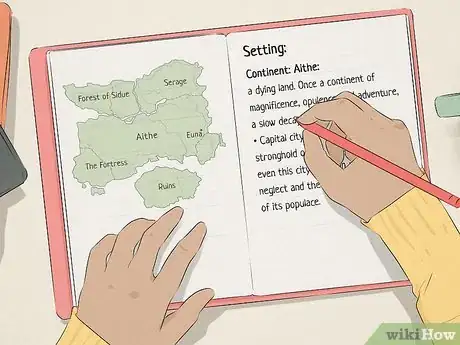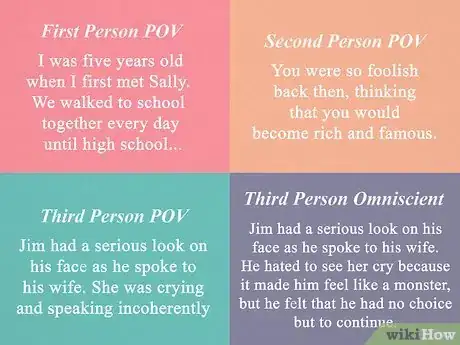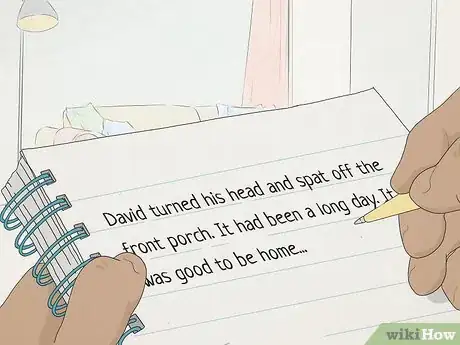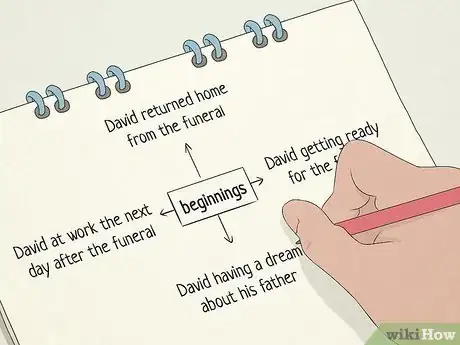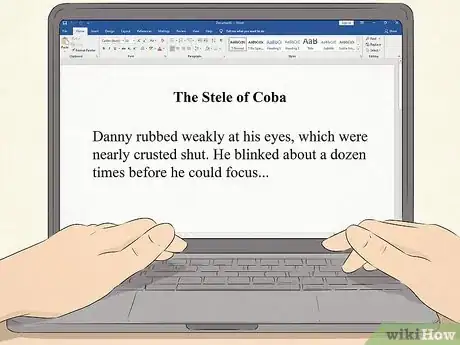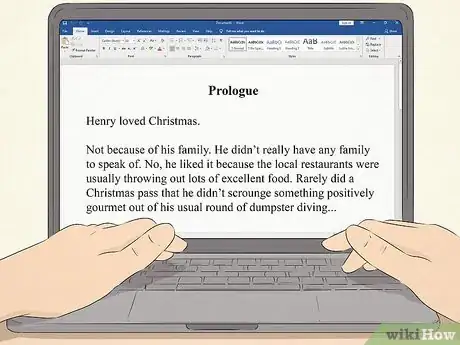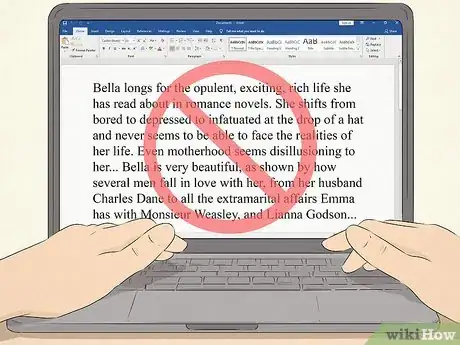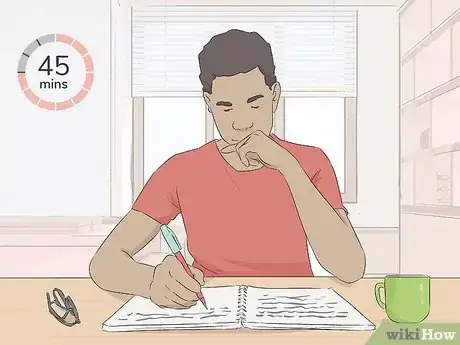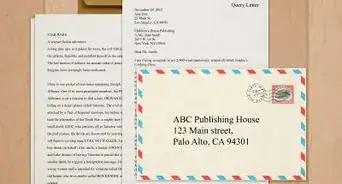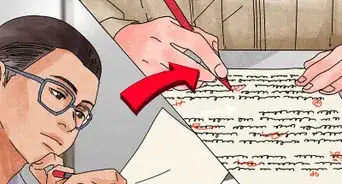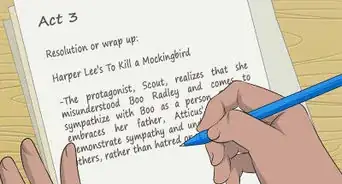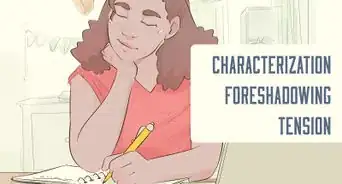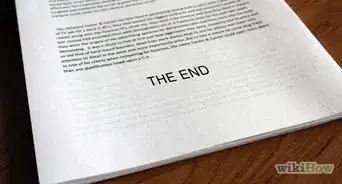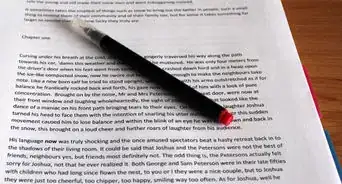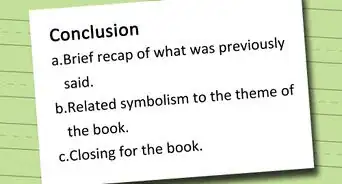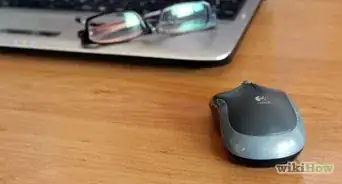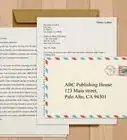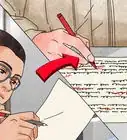This article was co-authored by Lucy V. Hay. Lucy V. Hay is an author, script editor and blogger who helps other writers through writing workshops, courses, and her blog Bang2Write. Lucy is the producer of two British thrillers and her debut crime novel, The Other Twin, is currently being adapted for the screen by Free@Last TV, makers of the Emmy-nominated Agatha Raisin.
There are 12 references cited in this article, which can be found at the bottom of the page.
wikiHow marks an article as reader-approved once it receives enough positive feedback. This article received 12 testimonials and 83% of readers who voted found it helpful, earning it our reader-approved status.
This article has been viewed 695,670 times.
Whether you’re writing a short story or a novel, coming up with the perfect opening can feel like the hardest part. But, while this can seem daunting, it is by no means impossible! Start with a good idea or generate one if you’re not sure what you want to write about. Outline your plot and characters to narrow your focus, and then start writing!
Things You Should Know
- Spend time brainstorming to jumpstart your imagination. Then, create a plot outline, write character sketches, and establish your story's setting.
- Choose a point of view to write from. For example, if you're telling the story through the protagonist's eyes, first or third person POV works well.
- Craft an opening line that sets the tone for the rest of your story and intrigues the reader to continue to the next line.
Steps
Generating Ideas
-
1Ask “What if” questions to jumpstart your imagination. When you ask yourself a “What if” question, you’re telling your brain to take something ordinary and think of it in a new way. After you ask a “What if” question, think through some possible answers. Keep in mind that every “What if” question can have various anwers. Keep answering your “What if” question until one of your answers ignites your imagination and feels like it could lead to a larger story. Examples of “What if” questions include:[1]
- What if dinosaurs still existed?
- What if we only had a limited amount of luck per day?
- What if our hair changed color every day?
- What if my best friend was a spy?
-
2Ask “I wonder” questions to craft a realistic fiction story. “I wonder” questions are a way to probe deeper into the reasons for why something happens, who it might happen to, and how it might feel. It doesn’t matter if you ask an expansive question or a very specific one, asking and answering an “I wonder” question opens your mind up to the possibility of learning new things and seeing old things in a new light. Some examples of “I wonder” questions are:[2]
- I wonder what Jim does in his basement every night.
- I wonder what it’s like to be a cross-country truck driver.
- I wonder what life is like in rural Russia.
Advertisement -
3Eavesdrop on other peoples’ conversations. Listen to other people in crowded places (like coffee shops) and discretely write down what they’re saying. Use that dialogue as a starting point to create characters and situational plot. What are their lives like? What’s their relationship to one another? Once you have a general idea of these characters, create a plot that focuses on their lives, or use them as minor characters in a larger storyline.[3]
- If you think you’re making anyone uncomfortable, stop eavesdropping and try another conversation.
-
4Keep a journal for stray ideas. Not all of your ideas can form a full story, but they can always help to create new characters or subplots. Try to avoid erasing “bad” ideas - instead, move them to a different list or journal that catalogues your half-formed ideas, and return to them later.
- Write your dreams down, too. Dreams and daydreams can be great starting points for a good story![4]
-
5Read as much as you can. Reading can help you get a sense for how a story flows, and will encourage you to develop your preferences. Do you like stories that begin and end abruptly? Do you value smooth setting description and characterization? Is plot the most important element of a story for you? Pay attention to how stories start, how they introduce their characters, and how quickly or slowly the plot moves, so you can start brainstorming your own narrative.[5]
- Most literary genres and types have specific conventions, so make sure you reading books and stories that are written in the style you plan on writing in.
-
6Use a plot generator. Plot generators can help kickstart a story by providing strange, creative, or new suggestions. Sometimes, the extra boost from an outside source is all you need to get that spark of creativity!
- For general plots, try http://writingexercises.co.uk/plotgenerator.php
- For fairytale plots, try http://www.springhole.net/writing_roleplaying_randomators/fairytaleplot.htm
- For mystery/horror plots, try http://tzplotgenerator.com
Drafting Your Story
-
1Create a plot outline. Your outline should include a general sense of what will happen, where it will happen, and who it will happen to. You can be as detailed or sparse as you’d like. Write at least one sentence per scene or chapter, depending on how long your work is, but don’t worry about filling in every little detail. That’ll come later![6]
- Write the whole plot, not just the beginning, so you know where your story is going.
- Outlines don’t work for everyone. If trying to plan out your story before you start bogs you down, just dive right in and figure out the details as you go along.
-
2Create a character profile for each major character. You can also make less detailed character profiles for your minor characters, if you’d like. While some of the information from your character profiles might never make it into your story, knowing these facts helps you write more well-rounded characters and therefore makes the story more interesting for your readers! You can find various character profiles and character profile worksheets online, but some basic things to write in your character profile include:[7]
- Height, weight, race, eye color, hair color, skin color, health
- Mannerisms, habits, hobbies, speech patterns, whether they’re an extrovert or introvert
- Greatest flaw, best quality
- Education, intelligence, short- and long-term goals
- The most embarrassing thing that’s ever happened to them
- The thing they’re proudest of
- Strengths, weaknesses
- Their relationship to the other characters
-
3Establish your setting. Your story’s setting can shape what your characters do, what their pasts are like, and what their future opportunities might be. For example, a story set in rural Brazil will be extremely different from a story set in outer space, because these environments influence what the characters can and can’t do. Think about how your setting impacts your characters and whether the setting changes throughout the novel. Some important things to consider include:[8]
- The year the story is set in
- The climate and time of year
- Nearby bodies of water, mountains, plants, and other geographical factors
- The cultural and political environment of the location you’ve chosen
- For example, a story set in Washington D.C. will probably include a mention of politics
- A story set in Paris might choose to mention fashion or nearby monuments like the Eiffel Tower
-
4Choose your point of view. There are three types of point of view: first person (“I” pronouns), second person (“You” pronouns), and third person (“He,” “She,” and “They” pronouns). The type of point of view you choose will mold your story.[9]
- Are you telling the story from the protagonist’s eyes? If so, your story should be told in first person or in third person limited (“He,” “She,” and “They” pronouns that still express the protagonist’s thoughts).
- Are you telling a story with a narrator? In this case, you’d probably use third person and either tell every character’s thoughts or no character’s thoughts.
- Second person a less common point of view, as it can be disorienting and confusing for the reader. Before choosing to write a second person story, read a book or short story that uses that point of view.
Writing the Beginning
-
1Find your starting point. You don’t want to start too far back or jump too far forward in the story. Remember that you’re introducing the reader to a new world (even in realistic fiction) so make sure you give them a chance to learn the basics - the main character’s name, their personality, their driving force - in the first scene or chapter.[10]
-
2Try different beginnings. If you’re not sure how to start, play around with different starting points. You might have to try a few before you find one that clicks, but that’s what writing is all about!
- Try starting with a character in action or your character’s physical appearance to immediately show the reader who’s important.
- Start with a bird’s eye view of the setting. Describe sensory detail before zooming into your character’s life or home.
- Tell your readers a character’s “secret” to immediately hook them.
- Set up the central conflict at the very start to make the reader desperate to know what’s going to happen next.
- Begin with a memorable, dramatic, or important flashback. Be careful, as flashbacks can confuse the reader if they don’t know it’s a flashback.
-
3Craft an intriguing opening line. Think about what kind of opening line you want to write. Will it be absurd and amusing? Bleak and foreboding? Inviting? Unexpected? Will it present an expansive truth? The type of opening line you choose sets the reader’s expectations for the story to come and convinces the reader to read the next line. If you’re feeling stuck, look up examples of famous opening lines for inspiration:[11]
- Absurd and amusing: “It was a bright cold day in April, and the clocks were striking thirteen.” From Nineteen Eighty-four by George Orwell.
- Foreboding: “It was a queer, sultry summer, the summer they electrocuted the Rosenbergs, and I didn’t know what I was doing in New York.” From The Bell Jar by Sylvia Plath.
- Inviting: “Call me Ishmael.” From Moby-Dick by Herman Melville.
- Unexpected: “All children, except one, grow up.” From Peter Pan by J.M. Barrie.
- Expansive truth: “All happy families are alike; each unhappy family is unhappy in its own way." From Anna Karenina by Leo Tolstoy.
EXPERT TIPLucy V. Hay is an author, script editor and blogger who helps other writers through writing workshops, courses, and her blog Bang2Write. Lucy is the producer of two British thrillers and her debut crime novel, The Other Twin, is currently being adapted for the screen by Free@Last TV, makers of the Emmy-nominated Agatha Raisin.Professional Writer
 Lucy V. Hay
Lucy V. Hay
Professional WriterFeeling stuck? Author and screenwriter Lucy Hay says: "You might be feeling worried or underprepared, or like you don't have enough time. You may not believe in your work, or you may have someone else telling you you're wasting your time. Sometimes mental health issues or depression can play a part in it, as well. As you get more experienced, you'll learn the processes that help you overcome these things."
-
4Write a prologue if your story has a lot of historical or narrative context. If the story’s context involved the main character, you can include this information in the main narrative. But, if the necessary context happened in a different setting, or if didn’t involve your protagonist in a concrete way, your book might benefit from a prologue.[12]
- Make sure your prologue is necessary and impacts the story’s plot significantly -- if it doesn’t, your story might be better off without one.
-
5Avoid information dumping. You don’t have to tell your readers everything about the story in the first scene or chapter. Information dumping can bog the story down and deter your readers, just as surely as a lack of information can make them confused. Work on striking the right balance, and ask outside observers for advice if necessary.
Continuing Your Narrative
-
1Reflect on what you’ve written. After writing your beginning, think about the story as a whole and decide if the opening fits. If it doesn’t, you can either change your opening or revise your story.
- If you’re not sure if your opening is working, ask for an outside opinion! Tell your reader that you’d like some honest but positive feedback on what you have so far.
-
2Write for at least 45 minutes at a time. Writing for longer chunks helps you get into the flow of the story, especially when you’re starting out. While it can be tempting to get five or ten minutes of writing in here or there, this might create a disjointed story, or cut up your story’s “voice.”
- Choose a writing location that works for you. Try writing at home, in a coffee shop, in a library, in a park, or somewhere else. Decide if gentle conversation, silence, or music helps you be most creative.
-
3Have fun! Writing can be difficult, frustrating, and challenging, but at the end of the day it should also be fun! Enjoy your stories, focus on ideas you like, and write stuff you’ll want to read later on.[13]
Community Q&A
-
QuestionHow do I write a war story?
 Community AnswerIn the beginning, you might want to focus on a character who is training for the war and all the emotions that they are feeling. Then, at the climax, the war begins and something terrible happens to that main character. Maybe a best friend dies, or they get injured very badly. Make it seem like there is no hope. Then, you can write about how they persevere and get through their troubles.
Community AnswerIn the beginning, you might want to focus on a character who is training for the war and all the emotions that they are feeling. Then, at the climax, the war begins and something terrible happens to that main character. Maybe a best friend dies, or they get injured very badly. Make it seem like there is no hope. Then, you can write about how they persevere and get through their troubles. -
QuestionHow do I describe a setting?
 Community AnswerDo some research if it's a specific place or city or maybe a beach or a camping site. Write about the environment, like a wave splashing at your feet, wind, or low-hanging clouds or the drops of rain making a sound as they hit the ground. Describe smells like that of wet soil or fresh bread. Describe the sounds your character hears like people talking, cars driving by, music, etc. You can practice by just going somewhere and writing a detailed description of your surroundings.
Community AnswerDo some research if it's a specific place or city or maybe a beach or a camping site. Write about the environment, like a wave splashing at your feet, wind, or low-hanging clouds or the drops of rain making a sound as they hit the ground. Describe smells like that of wet soil or fresh bread. Describe the sounds your character hears like people talking, cars driving by, music, etc. You can practice by just going somewhere and writing a detailed description of your surroundings. -
QuestionHow we can I make the ending of the story terribly appealing?
 Community AnswerThere are many ways to have a very appealing ending to a story. Leave a cliffhanger: A cliffhanger is an untold ending. Cliffhangers can make the reader stay in suspense, wanting to know what happens next. They also may read more books by you so they can figure out what happens next. Don't introduce new characters and hope for the best: Introducing new characters will make you have another part of the story unless you don't want an ending. Tie up loose ends quickly: If you do that, then you will be able to end the story with ease.
Community AnswerThere are many ways to have a very appealing ending to a story. Leave a cliffhanger: A cliffhanger is an untold ending. Cliffhangers can make the reader stay in suspense, wanting to know what happens next. They also may read more books by you so they can figure out what happens next. Don't introduce new characters and hope for the best: Introducing new characters will make you have another part of the story unless you don't want an ending. Tie up loose ends quickly: If you do that, then you will be able to end the story with ease.
Warnings
- If you choose to start with a flashback, make sure that your readers know when you’ve transitioned into the present, or you might lose or confuse them.⧼thumbs_response⧽
- Avoid cliches. Don’t start your story with a trite image or overused line, because that might make your readers think your story isn’t very original.⧼thumbs_response⧽
- Use exclamation points sparingly. Let the story speak for itself instead of trying too hard to convey excitement.⧼thumbs_response⧽
References
- ↑ http://www.neilgaiman.com/Cool_Stuff/Essays/Essays_By_Neil/Where_do_you_get_your_ideas%3F
- ↑ http://www.neilgaiman.com/Cool_Stuff/Essays/Essays_By_Neil/Where_do_you_get_your_ideas%3F
- ↑ http://www.nownovel.com/blog/how-to-find-book-ideas-easy/
- ↑ http://www.nownovel.com/blog/how-to-find-book-ideas-easy/
- ↑ https://gatekeeperpress.com/original-story/
- ↑ http://www.writersdigest.com/online-editor/7-steps-to-creating-a-flexible-outline-for-any-story
- ↑ https://www.writerswrite.com/journal/jun98/how-to-create-a-character-profile-6986
- ↑ http://www.writersdigest.com/tip-of-the-day/discover-the-basic-elements-of-setting-in-a-story
- ↑ https://literarydevices.net/point-of-view/
- ↑ http://www.writersdigest.com/writing-articles/by-writing-goal/write-first-chapter-get-started/10-ways-to-start-your-story-better
- ↑ https://englishlive.ef.com/blog/language-lab/ten-famous-opening-lines-english-books/
- ↑ http://www.nownovel.com/blog/ways-to-start-story-examples/
- ↑ http://www.writersdigest.com/online-editor/5-ways-to-develop-a-book-idea
- ↑ http://www.writersdigest.com/writing-articles/by-writing-goal/write-first-chapter-get-started/too-many-ideas-syndrome
About This Article
To start a story, try to open your story with something interesting or shocking so you're immediately hooking the reader. For example, you could start your story by letting the readers in on a secret about the main character, or you could start with a dramatic conflict so readers want to know what happens next. Also, try to make the opening line as intriguing as possible since that will be the reader's first impression of your story. For example, you could write something absurd or amusing in the first line to make readers laugh, or you could write something totally unexpected to shock them. To learn how to brainstorm ideas for your story, keep reading!
